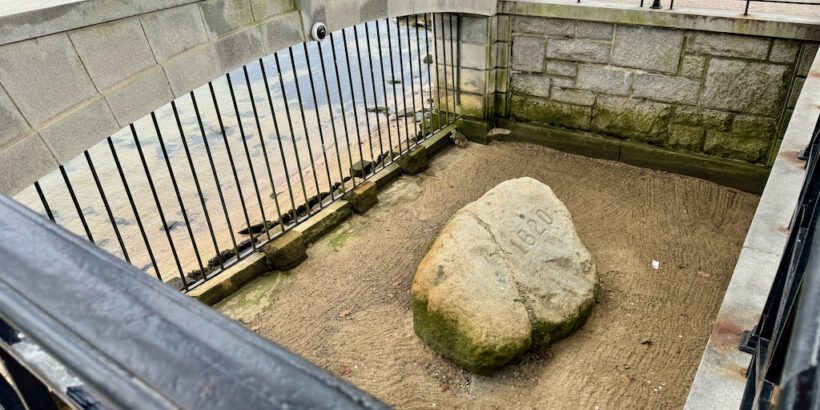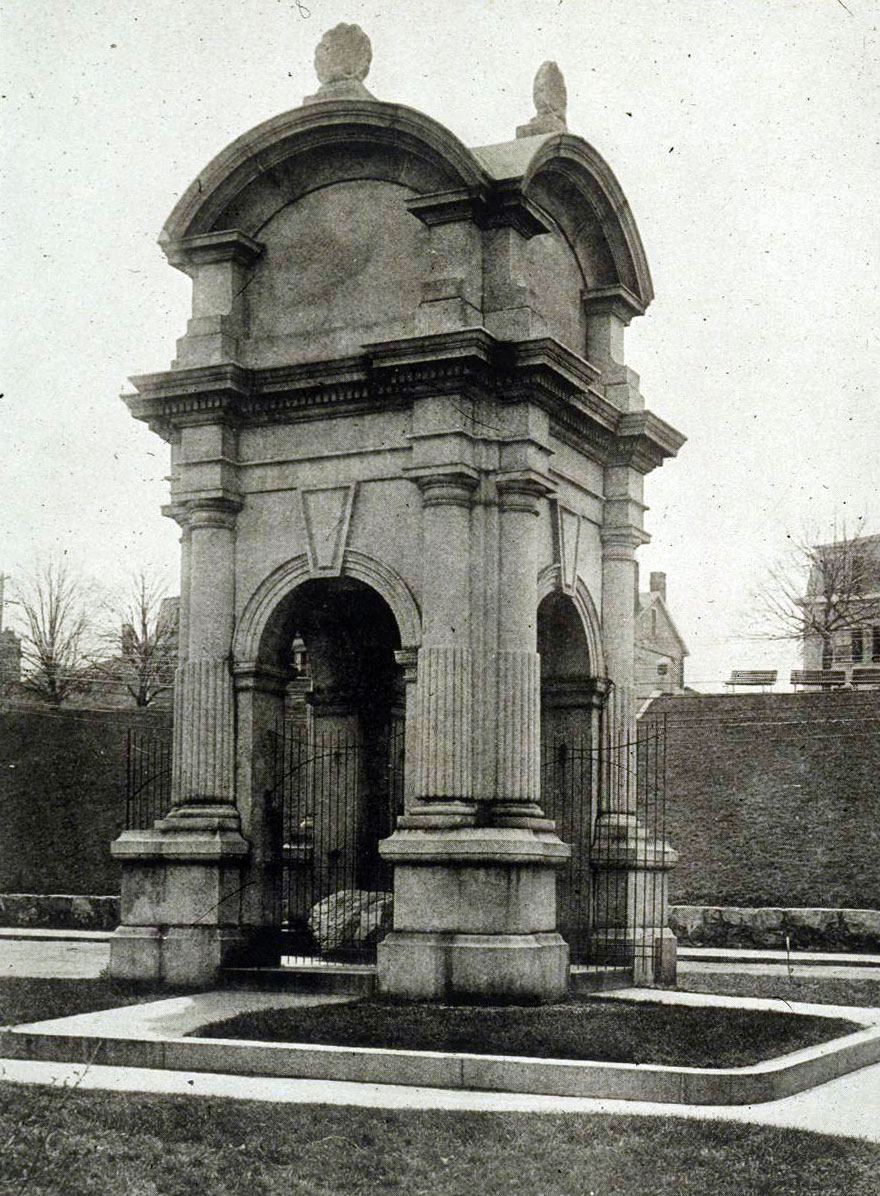Plymouth Rock is an attraction steeped in legend and symbolism.
On one hand, it serves as a potent symbol of the resilience of the Pilgrims who established the first permanent English colony in New England. On the other hand, it has the air of being just a mere rock and overshadowed by folklore.
So, what’s the true tale behind Plymouth Rock, and why should we care about this seemingly ordinary boulder?
Below, I’ll provide you with the full historical account of Plymouth Rock, allowing you to form your own perspective on its significance. I’ll also equip you with all the essential details for your visit and help you plan your trip.
Table of Contents
What is Plymouth Rock?
Plymouth Rock, located in Plymouth, Massachusetts, is believed to be the spot where the Pilgrims first hopped off the Mayflower. It’s a symbol that’s etched into America’s history books, standing for the grit and resolve of the early Pilgrims and perhaps a literal stepping stone to self-governance. Every year, it draws over a million curious onlookers.
Yet, this rock’s story isn’t exactly set in stone. There’s a whole lot of controversy and doubt about whether it’s the real deal when it comes to marking the Pilgrims’ landing. To add to the drama, this rock has been through some rough times, broken up and shuffled around over the years.
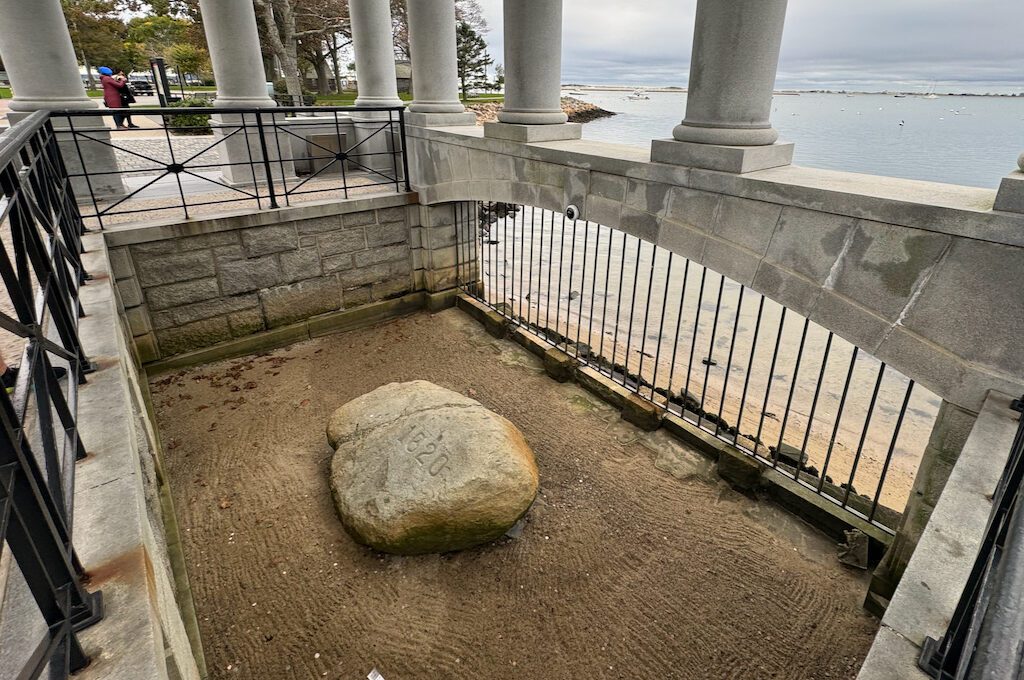
Plymouth Rock: A broken history
Plymouth Rock’s story is a bit broken, a bit hazy.
This rock, made of ancient Dedham granite that’s been around for some 600 million years, first ended up in Plymouth’s neighborhood around 20,000 years ago, thanks to some glacial action.
And it didn’t see much in the way of Europeans until 1620 when the Pilgrims arrived in the New World.
Arriving in the New World
After failing to reach their intended destination at the mouth of the Hudson River, the Pilgrims first set foot in modern-day Provincetown, found at Cape Cod’s tip.
Most of the Pilgrims hung back on the Mayflower, while a small group ventured out for about six weeks. It’s believed that they may have engaged in some not-so-savory activities, like dabbling in a bit of grave robbing or resource stealing from the natives in this time.
But once they realized Cape Cod was far from ideal with its vulnerable terrain and lack of freshwater, the Pilgrims moved on.
They probably hopped around the Cape, looking for a suitable area to land with everything they needed and eventually they decided to stop at Clark’s Island, where legend has it they kicked off their first Sabbath.
What’s intriguing is that there’s this colossal rock there, dubbed “Pulpit Rock,” which is way closer to what you’d envision when Plymouth Rock comes to mind. In fact, rumor has it that this might be the real Plymouth Rock!
After this stop, they eventually landed at Plymouth, where they laid the foundations for Plymouth Colony on December 26, 1620. This marked the birth of the first permanent English settlement in New England, a momentous occasion in US history.
Plymouth Rock is supposedly the site where the Pilgrims disembarked the Mayflower, which is why the rock is so significant.
But here’s the plot twist: the Pilgrims, in all their scribbling and documenting, never gave a shout-out to Plymouth Rock in their writings. You’d think Edward Winslow’s “Mourt’s Relation” or William Bradford’s “Of Plymouth Plantation” would drop at least a line about it, but no such luck.
There was apparently a record of the rock in Plymouth’s town boundaries in 1715, where it is described as “a great rock” but it doesn’t seem like much else was said about it until around 25 years later.
The legend of Plymouth Rock takes off
The tale of Plymouth Rock truly gained prominence in 1741, nearly 120 years after the colony’s establishment.
Local residents had intended to construct a wharf that would have concealed the rock. However, before construction could commence, an elderly church elder by the name of Thomas Faunce, aged 94, passionately proclaimed that the boulder marked the landing point of the Mayflower Pilgrims.
He made a request to be transported in his chair — over a distance of three miles — to the site.
There, he bid an emotional farewell to the rock, which he claimed his father, and possibly other Mayflower pilgrims, had informed him was the very spot where the Pilgrims first set foot.
Considering that Faunce’s father arrived in Plymouth three years after the Mayflower’s landing and Faunce himself was born in 1647, during a time when many of the Mayflower Pilgrims were still alive, his assertion possessed at least some potential validity.
But still, given the circumstances around the story (a distraught elderly man making an unverified claim on his death bed), many people suspect that Faunce’s re-telling is nothing more than conjured-up folklore.
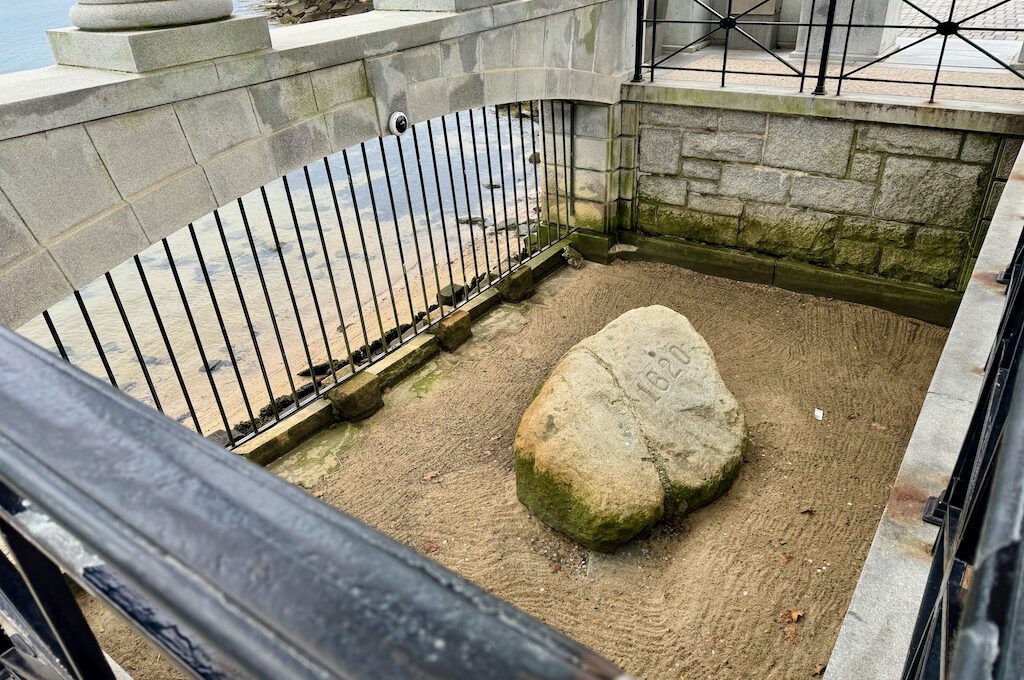
The rock begins to travel (and shrink)
In 1774, the residents of Plymouth made a rather bold move by attempting to relocate the rock in an attempt to create support for the revolution. However, during the move the rock split into two pieces.
The lower portion remained at the wharf, while the upper segment found a new home in the town’s meeting house. Interestingly, some interpreted this split as symbolic of the growing sentiment within the colonies to break free from English rule.
The upper rock was then relocated from Plymouth’s meetinghouse to Pilgrim Hall in 1834, and it’s reported that during the journey a vertical crack developed in the upper part of the rock, perhaps causing it to lose some of its material.
As the lower section of the rock was left behind at the wharf during these relocations, souvenir hunters, over time, took to chipping away at it, steadily reducing its size.
To safeguard it from further damage, a solution was sought. Eventually, a Victorian-style canopy supported by columns, skillfully designed by Hammatt Billings, was constructed on a waterfront location between 1859 and 1867. Apparently the rock was cut down in size to accommodate this canopy.
In 1880, the upper segment of the rock was carefully taken from the Pilgrim Hall Museum yard and rejoined with the remaining portion. During this restoration, the date “1620” was intricately carved into the rock, replacing the previously painted numbers.
In 1921, as a big part of the extended Pilgrim tercentenary celebrations, a structure that bears a resemblance to a Roman temple was erected to serve as Plymouth Rock’s new abode. Today, this iconic boulder rests on a sandy bed situated five feet below street level, enclosed within this dignified structure.
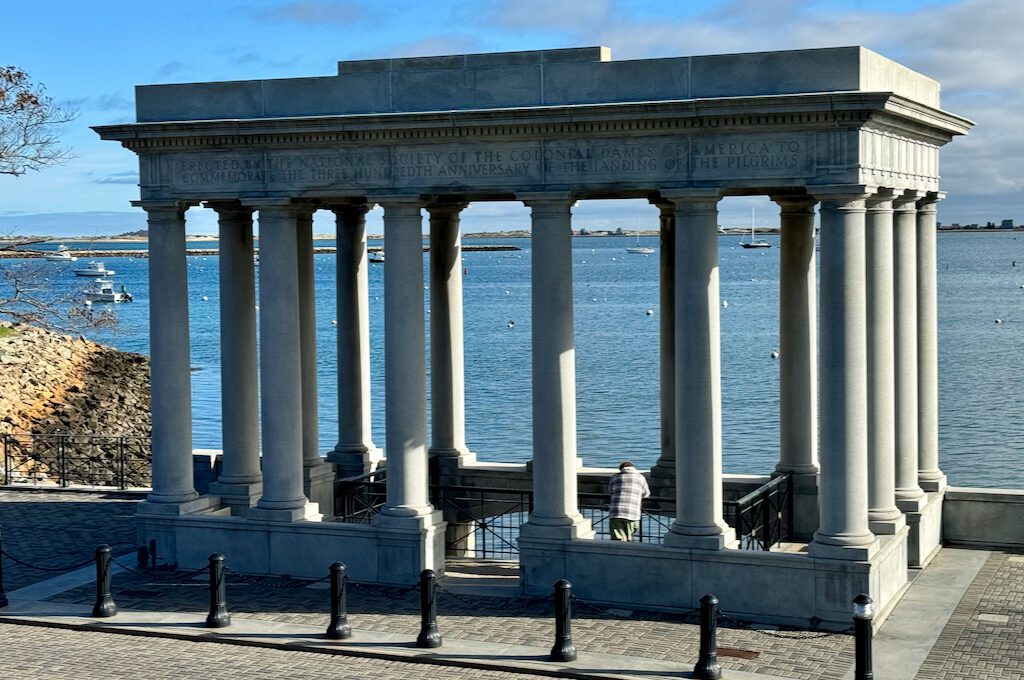
Also in the 1920s, it came to light that a 400-pound section, hewn from Plymouth Rock, had been repurposed as a doorstep for the Sandwich Street Harlow House.
In a commendable gesture, the Plymouth Antiquarian Society, who had purchased the historic home, contributed a portion of this rock to the Pilgrim Hall Museum and also to the Smithsonian.
The Smithsonian acquired another piece of Plymouth Rock earlier in 1911 that is painted with details from Lewis Bradford, a descendent of William Bradford. On that piece of small rock he wrote, “Broken from the Mother Rock by Mr. Lewis Bradford on Tues. 28th of Dec. 1850 4 1/2 o’clock p.m.”
So to recap, apart from fragments possibly held by private collectors and descendants of souvenir hunters, sections of Plymouth Rock can be found at the Pilgrim Hall Museum, the Smithsonian’s National Museum of American History, and the Plymouth Church of the Pilgrims, situated in Brooklyn Heights, New York.
This has left the small, war-torn boulder left today which some estimate to only be 1/3 of its original size.
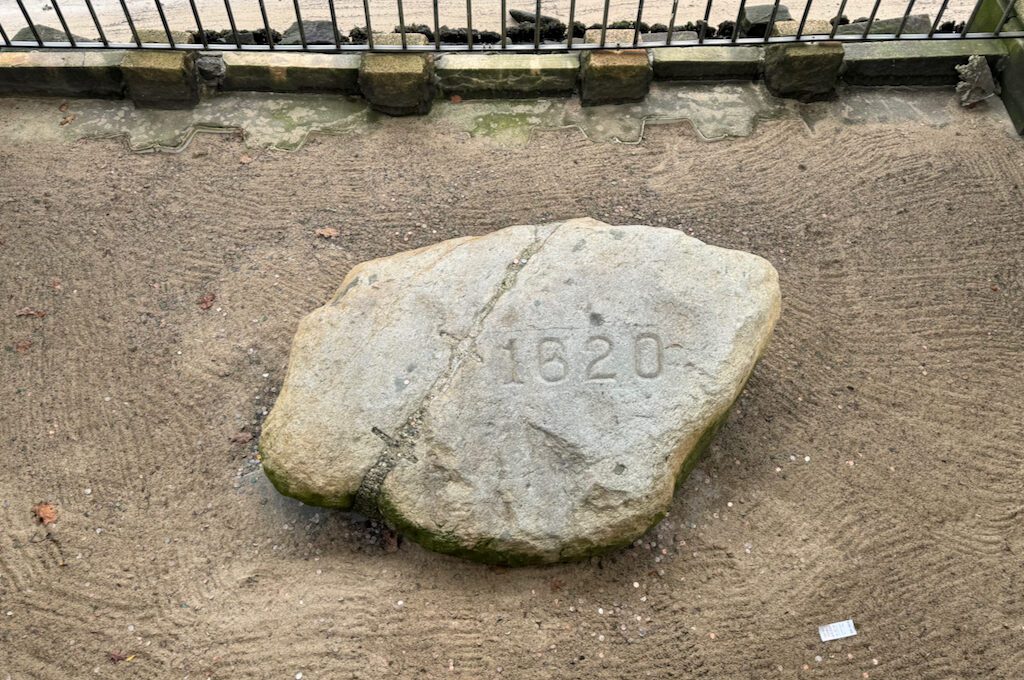
How to visit Plymouth Rock
Plymouth Rock is open to the public and free to visit.
It’s situated at Pilgrim Memorial State Park on the shores of Plymouth Harbor, conveniently located just off the street. There are parking lots available nearby for those who need them.
A common sentiment among visitors is a sense of mild disappointment, often stemming from expectations of a much larger or more imposing rock.
This sentiment can be further compounded when they discover that the rock’s fame may have been inflated by folklore and anecdotal accounts.
So adjusting your expectations before you visit can be a big help here.
Given its proximity to the street, a visit to Plymouth Rock is typically quite brief. You could easily be in and out in a couple of minutes.
However, during the summer and fall, interpretive staff may be on hand to provide additional insights and answer questions about its history.
Fortunately, the area offers a range of other attractions to explore. Among them, the Mayflower II, located next-door, is a major highlight. You can also take a leisurely stroll around the park grounds, where you’ll find notable statues like the one of William Bradford. Be sure to head up the steps across the street for a nice view of the portico.
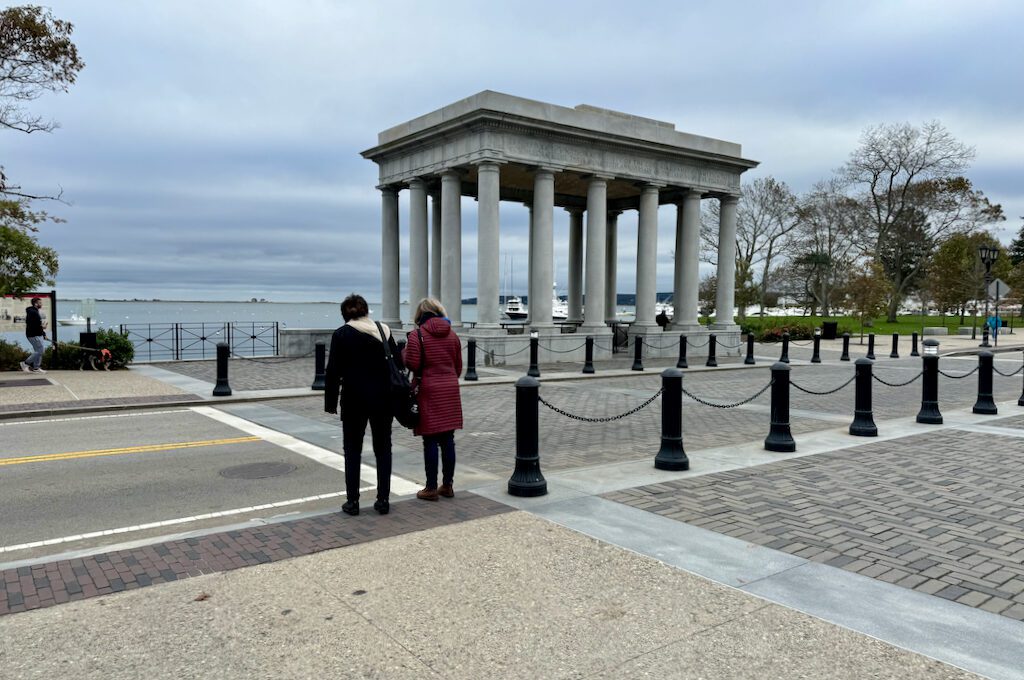
Final word
So, just to wrap it all up.
Plymouth Rock is not the first spot in America where the Pilgrims landed. There are no contemporaneous records confirming it as the spot where the Pilgrims eventually disembarked from the Mayflower. The assertion that it marked the Pilgrims’ landing was made by an individual in his 90s, well over a century after the initial event. It’s been chipped away, broken apart, and large chunks of it removed and relocated. And at the end of the day, it’s just a rock.
Nevertheless, Plymouth Rock remains a unique point of interest.
It’s at least located in close proximity to a site of tremendous historical significance to the United States and it undeniably holds symbolic significance, as the landing — along with the creation of the Mayflower Compact — marked a significant step in the direction of self-governance.
For some, Plymouth Rock is not just a historical landmark but a powerful emblem of the Pilgrims’ determination and resilience in the face of countless challenges, serving as a testament to the human spirit’s ability to overcome adversity and forge new beginnings.
And for some, including lots of Native Americans, the symbolism of Plymouth Rock is complicated and represents a painful history of colonization, displacement, and cultural disruption.
Although relationships were initially not marred with conflict, the arrival of the subsequent settlement led to significant changes in the lives of the indigenous peoples who had inhabited the region for generations. For them, Plymouth Rock serves as a reminder of the profound impact European colonization had on their way of life, including loss of land, resources, and cultural heritage.
How you personally perceive and feel about Plymouth Rock will be something to ponder when you have the chance to visit and explore this historic landmark.
Daniel Gillaspia is the Founder of UponArriving.com and the credit card app, WalletFlo. He is a former attorney turned travel expert covering destinations along with TSA, airline, and hotel policies. Since 2014, his content has been featured in publications such as National Geographic, Smithsonian Magazine, and CNBC. Read my bio.

